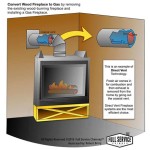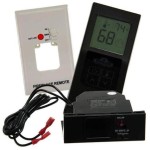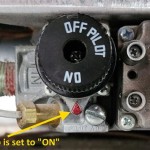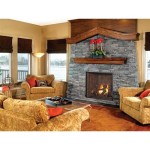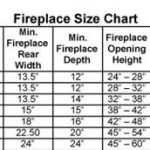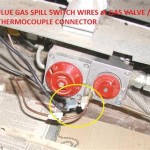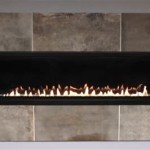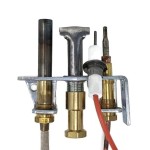```html
Can I Replace A Gas Fireplace With A Wood Burning Insert? A Comprehensive Guide
Many homeowners with existing gas fireplaces eventually consider replacing them with a wood-burning insert. This shift often stems from a desire for a more authentic fireplace experience, increased heating efficiency, or aesthetic preferences. While the idea is appealing, the process involves several considerations, and the answer to whether it's possible isn't always a straightforward "yes". This article provides a comprehensive overview of the factors involved in replacing a gas fireplace with a wood-burning insert.
The transition requires careful evaluation of existing infrastructure, building codes, safety concerns, and potential modifications. The decision should be based on a thorough understanding of the requirements and potential challenges involved. It is crucial to consult with qualified professionals, including chimney sweeps, fireplace installers, and local building inspectors, before undertaking such a project.
Key Point 1: Evaluating Existing Infrastructure and Chimney Compatibility
The existing chimney is a primary consideration when contemplating a gas-to-wood conversion. Gas fireplaces typically vent through a smaller, often flexible, flue liner designed specifically for gas appliance exhaust. Wood-burning inserts, conversely, require a larger, more robust chimney system capable of withstanding higher temperatures and safely venting smoke and combustion byproducts. A gas chimney is almost never suitable for wood burning.
The size and construction of the existing chimney must meet the specifications outlined by the wood-burning insert manufacturer and relevant building codes. These codes are often based on safety standards set by organizations such as the National Fire Protection Association (NFPA). The chimney must be properly sized to ensure adequate draft, which is essential for efficient combustion and preventing dangerous backdrafts of smoke and carbon monoxide into the home.
An inspection by a qualified chimney sweep is essential. This inspection should assess the chimney's structural integrity, identify any existing damage (such as cracks or deterioration), and determine whether the chimney liner is appropriate for wood burning. If the existing chimney is inadequate, it will need to be relined with a code-compliant liner designed for wood-burning appliances. This relining process can be a significant expense but is crucial for safety and proper operation.
Furthermore, the height of the chimney must meet minimum requirements based on its proximity to other structures on the property and neighboring buildings. Insufficient chimney height can lead to poor draft and increased risk of smoke spillage. Local building codes will specify the required clearances. The condition of the chimney crown (the top of the chimney) should also be evaluated, as damage here can allow water to enter and damage the chimney structure.
Consider that a masonry chimney is not always required. Some homes may have a prefabricated metal chimney system. If so, it must also be inspected and deemed suitable for the higher temperatures of a wood burning fireplace. Replacement or upgrades may be necessary.
Key Point 2: Understanding Building Codes and Permit Requirements
Replacing a gas fireplace with a wood-burning insert is considered a significant alteration to a home's heating system and is almost always subject to local building codes and permit requirements. These regulations are designed to ensure the safety of the installation and protect occupants from fire hazards and carbon monoxide poisoning. Failing to obtain the necessary permits can result in fines, delays, and even the requirement to remove the improperly installed insert.
Before starting any work, contact the local building department to determine the specific permit requirements in your area. The application process typically involves submitting detailed plans of the proposed installation, including information about the wood-burning insert, the chimney system, and any modifications to the existing structure. The building department may also require inspections at various stages of the installation to ensure compliance with the code.
Building codes often specify minimum clearances to combustible materials around the fireplace opening and chimney. These clearances are designed to prevent fires from spreading to walls, floors, and other nearby surfaces. The wood-burning insert must be installed according to the manufacturer's instructions and in compliance with these clearance requirements. Non-combustible hearth extensions are often required to protect the flooring in front of the fireplace opening.
Furthermore, carbon monoxide detectors are typically required in homes with wood-burning appliances. These detectors provide an early warning of dangerous carbon monoxide levels, which can be a life-saving measure. Smoke detectors are also essential for fire safety. Local codes may have specific requirements for the placement and type of these detectors.
It's important to remember that building codes can vary significantly from one jurisdiction to another. It is the homeowner's responsibility to ensure that the installation complies with the specific codes in their area. Engaging a qualified contractor who is familiar with local building codes can help to navigate the permitting process and ensure a code-compliant installation.
Key Point 3: Addressing Fireplace Opening and Hearth Modifications
The existing fireplace opening designed for a gas fireplace may not be the appropriate size or shape for a wood-burning insert. Gas fireplaces are often smaller and shallower than their wood-burning counterparts. The wood-burning insert must fit snugly within the fireplace opening while maintaining adequate clearances for proper air circulation and heat dissipation.
Modifications to the fireplace opening may be necessary to accommodate the new insert. This could involve enlarging the opening, reinforcing the surrounding masonry, or adding a non-combustible facing material. The extent of these modifications will depend on the size and design of the wood-burning insert and the existing fireplace structure. A structural engineer might need to assess the opening if significant modifications are required.
The hearth, the non-combustible area in front of the fireplace opening, may also need to be modified. Wood-burning fireplaces typically require a larger hearth extension than gas fireplaces to protect the flooring from sparks and embers. Building codes specify minimum hearth extension requirements based on the size of the fireplace opening. The hearth extension must be constructed of non-combustible materials such as brick, stone, or tile.
Aesthetics also play a role in the fireplace opening and hearth considerations. The wood-burning insert should complement the overall style of the room. Surrounding materials should be chosen to enhance the visual appeal of the fireplace. Proper sealing around the insert will also prevent air leaks and maximize the efficiency of the fireplace.
When installing the wood-burning insert, attention needs to be paid to proper insulation around the insert. This will help to retain heat and prevent heat loss through the walls. The insulation must be non-combustible and rated for high temperatures. Furthermore, proper sealing around the insert will also prevent air leaks and maximize the efficiency of the fireplace.
In addition to the three key points above, consider the ongoing maintenance requirements of a wood-burning fireplace. This includes regular chimney cleaning to remove creosote buildup, which is a flammable byproduct of wood combustion. Creosote buildup can increase the risk of chimney fires. A qualified chimney sweep should inspect and clean the chimney at least once a year, or more frequently if you burn wood regularly. Also, consider the cost of firewood and the labor involved in storing and moving it.
Ultimately, determining whether you can replace a gas fireplace with a wood-burning insert requires careful planning, professional evaluation, and adherence to building codes. Consulting with qualified professionals and thoroughly assessing your existing infrastructure are essential steps in the process.
```
Want To Convert Gas Wood Fireplace Full Service Chimney

Want To Convert Gas Wood Fireplace Full Service Chimney

Can A Wood Burning Fireplace Be Converted To Gas The Flame Company

Convert To Gas Installing Fireplace Inserts Doctor Flue

Remodel Or Upgrade Your Existing Fireplace The Kernel Burner

Gas Logs Vs Wood Burning Fireplaces Dc Area Fireplace Service

Fireplace Insert Guide Fireplaces Direct Learning Center

Replacing A Gas Fire With Wood Burner

Converting A Fireplace To Wood Burning Stove Chesneys
How To Install Gas Fireplace Insert Heat Glo
Related Posts

